Publications
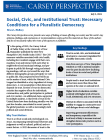
July 2, 2024
In this perspectives brief, author Bruce Mallory discusses how trust in social, civic, and institutional structures is a necessary ingredient for a healthy democratic society.

June 27, 2024
In this brief, authors Hannah Vargason, Eric Hangen, and Michael Swack discuss the ways foundations and other catalytic capital investors can fill gaps in and support the effective and equitable implementation of the EPA’s Greenhouse Gas Reduction Fund.
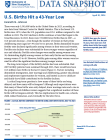
April 30, 2024
In this data snapshot, Carsey's Senior Demographer Kenneth Johnson reports that there were only 3,591,000 births in the United States in 2023, according to new data from National Center for Health Statistics.
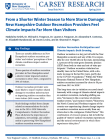
April 3, 2024
In this brief, the authors examine to what extent outdoor recreation providers and visitors in New Hampshire are impacted by annual climatic conditions representative of long-term trends, specifically, through the 2024–2028 New Hampshire Statewide Comprehensive Outdoor Recreation Plan.
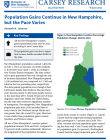
March 14, 2024
In this brief, Carsey Senior Demographer Kenneth Johnson reports that New Hampshire’s population reached 1,402,054 on July 1, 2023, an increase of 24,500 residents since April 1, 2020, according to new Census Bureau estimates.
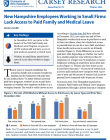
February 7, 2024
In this brief, author Kristin Smith reports that In December 2022, just prior to the launch of the NH Paid Family and Medical Leave Program, 40 percent of NH workers did not have access to paid medical, parental, or family leave. In its first year, the program has reached 14,712 workers or less than 3 percent of Granite State workers.
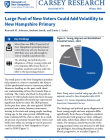
January 17, 2024
In this brief, authors Kenneth Johnson, Andrew Smith, and Dante Scala note a greater likelihood of volatility in the New Hampshire primary because there will be many new faces among the voters who flock to the polls on January 23.

January 11, 2024
In this report, author Jayson Seaman reports that cross-sector partnerships are playing a critical role in helping New Hampshire youth transition into postsecondary education and work. The partnerships work best when they involve collaboration and flexibility and provide exposure to career roles and hands-on practice with key skills.
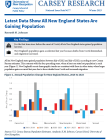
December 20, 2023
In this brief, Senior Demographer Kenneth Johnson reports that population gains were widespread in New England last year, according to new Census Bureau estimates.
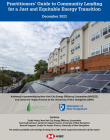
December 15, 2023
In this guide, authors Curtis Probst, Tina Poole Johnson, and Hannah Vargason share a collection of key resources and references that provide an entry point to clean energy finance for community lending practitioners and to community development finance for green lenders.
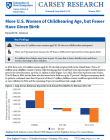
December 11, 2023
In this brief, Senior Demographer Kenneth Johnson reports that, in 2022, there were 4.7 million more childless women of prime child-bearing age in the United States than would have been expected given fertility patterns prior to the Great Recession, up from 2.1 million in 2016.
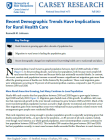
November 16, 2023
In this brief, Senior Demographer Kenneth Johnson reports that nonmetropolitan (rural) America gained population between April of 2020 and July of 2022. In the preceding decade, rural areas lost population, both because more people left rural areas than moved to them and because births just minimally exceeded deaths.
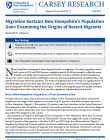
October 30, 2023
New Hampshire’s demographic future depends heavily on migration. The state’s population continued to grow in 2021 and 2022 because a migration gain of 18,300 was enough to offset the excess of deaths over births.
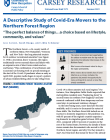
August 9, 2023
The Northern Forest—a 34-county swath of northern Maine, New Hampshire, Vermont, and New York—saw an increase in domestic migration during the pandemic, with 85 percent of the region’s counties experiencing domestic in-migration gains between 2020 and 2021, compared with 63 percent of counties in the rest of the United States.
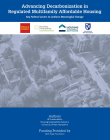
August 2, 2023
The policy levers contained in this working paper outline a series of steps that can be taken to advance decarbonization today, create sustainable systems change, and climate align housing for our future.
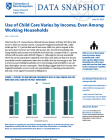
July 20, 2023
In this data snapshot, author Jess Carson reports that data from the U.S. Census Bureau collected between January and May 2023 show that access to child care remains uneven.
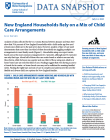
July 12, 2023
In this data snapshot, author Jess Carson reports that data collected by the U.S. Census Bureau between January and May 2023 show that 70 percent of New England households with a child under five use child care, and more than one-third of those rely on multiple arrangements.
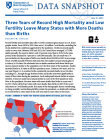
June 27, 2023
In this data snapshot, Senior Demographer Kenneth Johnson reports that with Covid-induced mortality at record highs and continuing low fertility during the past three years, U.S. births exceeded deaths by the smallest margin in more than a century.
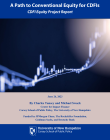
June 26, 2023
In this report designed to serve the Community Development Financial Institution (CDFI) sector, authors Charles Tansey and Michael Swack describe a step-by-step blueprint for accessing private equity in Stage One and conventional equity in the public market in Stage Two through participating CDFIs.
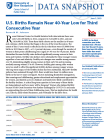
June 5, 2023
In this data snapshot, Senior Demographer Kenneth Johnson reports that recent National Center for Health Statistics birth data indicate there were only 3,661,000 births in 2022, compared to 3,664,000 in 2021, and just 3,614,000 in 2020. These three birth cohorts are the smallest in 40 years and continue a birth decline that began in the era of the Great Recession.
